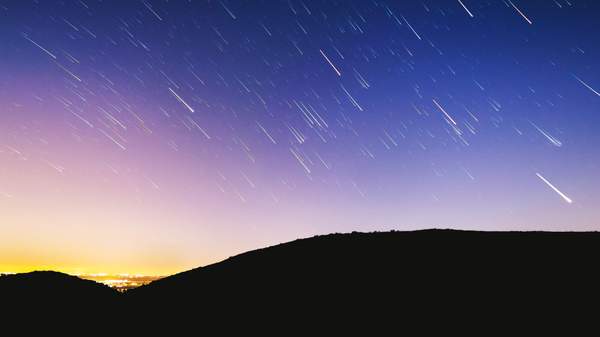Overview
Every autumn, a the Eta Aquarid meteor shower sets the sky ablaze. It might not be as famous as Halley's Comet, but the Eta Aquarids are actually a distant relation — the bits and pieces you see flying around were on Halley's path a really, really long time ago. And, rather than only being visible every 75 years (the next Halley's Comet sighting is in 2061), you can catch the Eta Aquarids annually. This year, the shower will be at its most spectacular this weekend — here's how to catch a glimpse.
WHEN TO SEE IT
The shower will reach a peak in the early morning of Saturday, May 6, but will still be able to be seen for the another day or two. The best time to catch an eyeful is just before dawn after the moon has set, so around 4am.
At that time, you'll be in the running to see as many as 30 meteors every 60 minutes. Each will be moving at about 225,000 kilometres per hour, shining extraordinarily brightly and leaving a long wake. The shower's cause is, essentially, the Earth getting in the comet's way, causing stardust to fry up in the atmosphere.
WHERE TO SEE IT
Being in the southern hemisphere, we get some of the best views in the world. So, if you're living in the city, it could be time for a last minute trip to a clear-skied camping spot. The trick is to get as far away from light pollution as possible.
For Sydneysiders who don't mind a long drive, this could mean a trip to the Far South Coast. We reckon Picnic Point campsite in Mimosa Rocks National Park might be a winner. Or, if that sounds too far away, Booderee National Park in Jervis Bay is pretty light-free. Alternatively, head west — after all, you'd be hard pressed to find better views than at The Dish, just outside of Parkes.
Melburnians might consider a journey to Wilsons Promontory or along the Great Ocean Road, as far as Killarney Beach. For somewhere closer, there's Heathcote, which is just an hour from the city, but is an excellent vantage point. For a real escape, head to Snake Valley in the Central West, where there's hardly a light in sight.
For a quick trip out of Brisbane, try Lake Moogerah, Lake Wivenhoe or Lake Somerset, which are all rather dark, considering their proximity to the city. If you have a bit more time, head two-and-a-half hours west to Leyburn, which has come of the busiest skies in Queensland, or eight hours west to the tiny town of Charleville in the outback.
HOW TO SEE IT
The shower's name comes from the star from which they appear to come, Eta Aquarii, which is part of the Aquarius constellation. So that's what you'll be looking for in the sky. To locate Eta Aquarii, we recommend downloading the Sky Map app — it's the easiest way to navigate the night sky (and is a lot of fun to use even on a non-meteor shower night). If you're more into specifics, Time and Date also have a table that shows the direction and altitude of the Eta Aquarids. They've been updating this daily.
Apart from that, wear warm clothes, take snacks and be patient. Happy stargazing.
